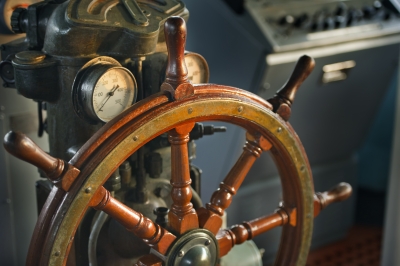 The Philippine Maritime Industry Authority (Marina) surpassed by a good margin its target revenues for 2015 while also beating target key performance indicators for the year.
The Philippine Maritime Industry Authority (Marina) surpassed by a good margin its target revenues for 2015 while also beating target key performance indicators for the year.
The agency garnered P983.728 million in collections from operations and services, higher by 12.7% than its P872.826 million target and 37.8% more than the P713.657 million it earned in 2014, according to the authority’s 2015 accomplishment report.
In the same report, Marina said it recorded 9,981 ship registrations, or 36.8% higher than the 7,296 target and 23.7% up from 2014’s registration total of 8,071. The increase was attributed to the mobile registration campaign it conducted nationwide in coordination with the Bureau of Fisheries and Aquatic Resources, National Telecommunications Commission, and other related government agencies.
Mobile registration allows fisher folk and motor banca owners to register, license, and document their ships and vessel crew using “pro poor rates,” which are lower payment rates for registration of motor bancas, issuance of certificates, and licensing of seafarers operating such ships. Mobile registration drives were conducted in Macabebe, Pampanga; Subic and Masinloc, Zambales; Obando, Bulacan; Mariveles, Bataan; and Cavite.
The agency also issued a total of 43,868 certificates, permits, and licenses last year, 28.6% more than the 34,119 target for the year but 27% less than the 60,104 registered in 2014.
Last year, Marina issued 1,249 certificates of public convenience (CPCs) to shipping companies, 71% up from the target of 730 firms and 18% higher than the 1,059 CPCs granted in 2014. Last year was the first full year Marina implemented its special processing window/express lane (SPWEL), which is intended to speed up processing of permits for vessel imports and encourage investments in the local shipping industry. SPWEL was made permanent in late 2014.
Marina also audited 535 maritime companies, 31% short of the targeted 771 companies and 50% lower than the 802 audited companies in 2014.
Meanwhile, its Enforcement Service inspected 723 vessels, or 44.6% more than the target. Of the total, 553 were passenger ships, 51 cargo vessels, 43 fishing vessels, one tanker, 13 tug boats, one pleasure yacht, and 61 were unregistered boats.
At the same time, Marina issued 21 new and revised policies, rules, and regulations, as well as 41 advisories, covering shipping, shipbuilding, and Standards of Training, Certification and Watchkeeping.
Among the new policies issued last year was Marina Circular No. 2015-04 implementing Executive Order (E.O.) No. 909.
The EO, issued in 2010, gives incentives to ship owners and operators that invest in the modernization, improvement, and upgrade of the domestic merchant fleet.
The order also encourages stakeholders to introduce internationally classed brand-new or newly constructed vessels in domestic shipping so as to “bring about safer and more efficient sea transport and improved quality of services.”
Last year, the first Shipyards Association of the Philippines was launched as part of the agency’s plan to improve the country’s shipbuilding and ship repair industry.
The agency also reviewed the country’s Road Roll-on Roll-off Transport System (RRTS), which is a network of terminals linked by RORO vessels from Batangas port to any point in Luzon, Visayas, and Mindanao. The system is designed to improve and promote inter-island sea transportation in the Philippines.
Data gathered from Marina’s assessment done in the first half of 2015 showed that Western Nautical Highway and Pan Philippine Highway are the two most successful and dynamic highways of the four routes under the RRTS.
The Eastern Nautical Highway, on the other hand, remained the most unsuccessful and unproductive because no vessel operates in the area since portions of the highway overlap with the Central Nautical and Pan Philippine Highways, particularly those located in Masbate and Surigao City.
According to Marina, other factors affecting the success and productivity of nautical highways are the condition of port facilities; the condition of infrastructures or roads going to the port area; the proliferation of ports in one municipality; and the economic activities or tourist spots in the area.
Marina also conducted a market or ocular survey of the Matnog-Allen route that early this year experienced congestion due to the suspension of RO-RO operations after a heavy storm. The port likewise suffered congestion in 2013 after Super Typhoon Yolanda hit the country.
The agency’s Domestic Shipping Service made several recommendations to rationalize shipping schedules during peak hours, including suggesting alternative routes for passengers and cargo vehicles stranded at the port of Matnog. These alternative routes included the Bulan Port in Sorsogon, which is the nearest port in Matnog, and San Isidro Ferry Terminal in the province of Northern Samar, about 39 kilometers from the port of Matnog.
Last year, Marina implemented a 20% increase in fees and charges for all applications except those covered by the agency’s pro-poor programs and seafarer-related certificates.
Aside from the rate increase, Marina enjoined shipping companies to adjust their passenger and cargo rates “due to clamour of the riding public and shippers to reduce shipping rates in view of several reductions in oil prices.” The order resulted in cuts to rates on several routes.
Image courtesy of worradmu at FreeDigitalPhotos.net





